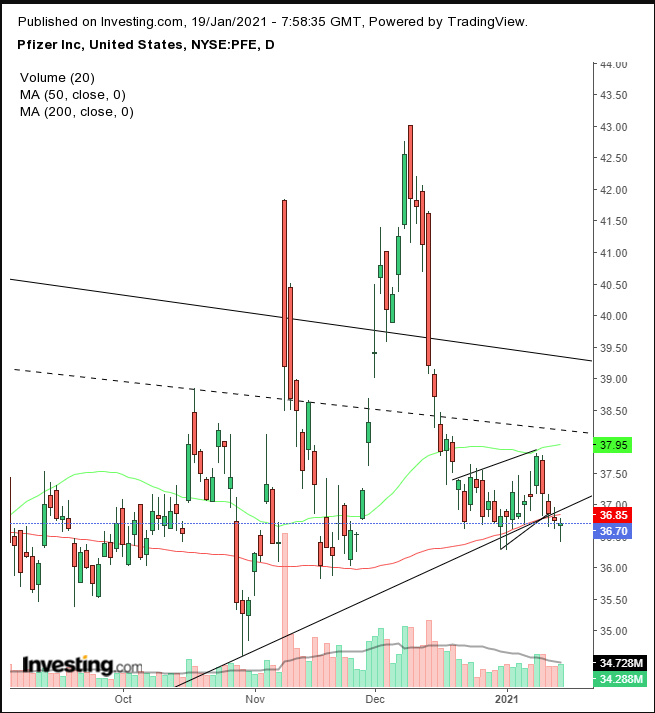When 23 elderly Norwegians died recently, after receiving the Pfizer (NYSE:PFE) COVID-19 vaccine, China's Communist Party tabloid The Global Times posited that the fatalities were receiving little coverage because English-language media was hiding unsympathetic news about a vaccine produced in the West while focusing on negative news about China's Sinovac (NASDAQ:SVA) vaccine. Nonetheless, on Monday, Norway said it would continue using the vaccine}} developed by Pfizer in partnership with Germany's BioNTech (NASDAQ:BNTX), describing the fatalities as individuals who were "old, frail and with serious diseases."
Still, after the deaths were announced, Pfizer issued a statement saying it was temporarily slowing its deliveries to Europe, as it aims to ramp up production. We can't say whether this last development is related to any internal issues regarding quality control at the company as well, or whether logistics alone are the cause.
However, Michigan's Wayne County, where Detroit is located, just announced it was shifting to the Moderna (NASDAQ:MRNA) vaccine, citing supply shortages of the Pfizer innoculation. Will Pfizer lose business to Moderna, because of the production slowdown? We couldn't say.
But the supply-demand balance on PFE's technical chart has been tilting toward a selloff.

The stock completed a rising flag, bearish after the dramatic 15% dramatic drop from the Dec. 9 high of $43 to the $36, Dec. 22 low. The flag is presumably rising on a combination of a short squeeze and dip buyers, even as it remains tight while continued selling engorges demand.
However, the downside breakout suggests that supply has overrun demand, and sellers are now seeking buyers at even lower prices. This is a setup for creating a domino reaction, in which the price is expected to repeat the prior move.
Just two weeks ago, {{art-200549720||we provided a bullish view on the New York City-based vaccine-maker. But since then, much has changed, both fundamentally—as described above—as well as technically.
To be clear, we don't know whether there's actually any problem with the Pfizer vaccine, nor can we predict if the company will lose significant business to Moderna, the Wayne County switchover notwithstanding. All we know for sure is that technically, the price pattern has weakened.
Still, that doesn’t mean that with some bit of good news the small downside breakout won’t reverse and continue along the uptrend line that's visible on the chart, fulfilling the longer-term upside view we provided two weeks ago. Plus, the technical picture isn't totally clear right now. For example, we'ld like to see spiking volume on the downside breakout, for evidence that consensus has shifted into a downtrend. Therefore, wait for a signal either way for confirmation or limit your exposure.
Indeed, summing up the various chart indicators and why we're no longer completely bullish:
- The 50 and 200 DMAs frame the flag, demonstrating its technical significance.
- The 200 DMA and flag bottom appear on the very uptrend line since the March bottom, presumably so that bears can gear up to take this bullish stronghold.
- The highest volume spikes appeared on red days.
Trading Strategies
Conservative traders should wait for two descending peaks and troughs, before shorting.
Moderate traders would short after the price falls below the Nov. 17 low of $35, then wait for a return-move, to retest the pattern.
Aggressive traders could short at will, provided they understand and accept the higher risk with less confirmation, for the potential higher reward of an early entry and have a coherent trade plan they are committed to.
Just an example:
Trade Sample
- Entry: $37
- Stop-Loss: $38
- Risk: $1
- Target: $34
- Reward: $3
- Risk:Reward Ratio: 1:3
Author's Note: This is just a sample. It does not replace reading and understanding the full analysis in the post itself, which is primarily a breakdown of possibilities and how to navigate them in effort to increase your odds of winning in trading overall, not necessarily on this specific trade. Trading is essentially luck management.
